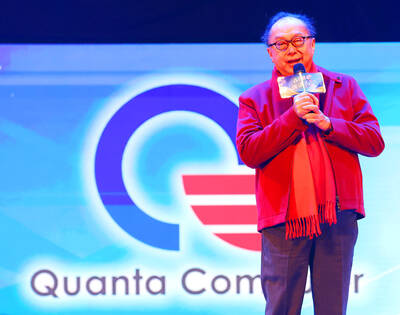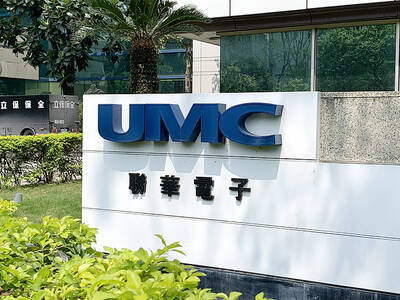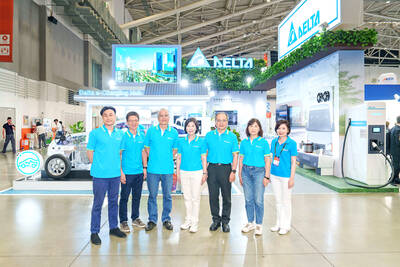The much-touted iPad was launched amid great fanfare in the US on Saturday, prompting analysts to question whether Apple Inc’s tablet device will put a brake on growth in e-reader sales.
“Although e-readers offer features not found on iPad or tablet devices, we expect their single functionality and lack of quality color displays will result in significant pricing pressure from the iPad, which retails as low as US$499,” Dale Gai (蓋欣山), an equity research analyst at Yuanta Securities Co (元大證券), said in a report last Tuesday.
To drive demand, 9-inch monochrome e-readers should be priced below US$199 in the US and US$99 in China. In these scenarios, margin pressure will hit the supply chain, Gai said.
While global shipments of 10 million e-readers this year — up from 4 million last year — is achievable, industry downside risks are expected over the next two years unless significant technological breakthroughs lower average selling prices and offer better color solutions, the report said.
Topology Research Institute (拓璞產業研究所) said last week that if the iPad craze maintains its momentum, total sales could reach 5 million units in the first three months.
Taking into account other tablet devices such as tablet PCs, combined shipments are expected to hit 12 million this year, beating e-readers in terms of sales, the Taipei-based research firm said.
Yuanta said electrophoretic displays (EPD) account for between 25 percent and 30 percent of e-readers’ total material costs, with prices controlled by E-Ink Corp, a subsidiary of e-paper display maker Prime View International Co (元太科技).
Projective capacitive-type touch panels also account for 25 percent of ipad's total material costs, but a 25 percent to 30 percent year-on-year price drop will result a deeper cost-curve than E-Ink’s EPD from next year onwards, it said.
“E-readers face serious questions — either offer a deep price cut at the expense of margin, or stay in the niche sector with less growth potential beyond next year,” Gai wrote.
Although the market will see enriched e-reader devices, with such technologies as flexible substrates and touch panels, the mainstream 9-inch monochrome e-readers could offer less novelty this year, while mass production of color e-readers is still in its infancy, he said.
Therefore, E-Ink’s dominant share is expected to face intensifying competition from the second half of next year, Gai said.
While E-Ink should retain between 80 percent and 90 percent of the e-reader market this year, it faces rising rivalry from low-cost suppliers like Sipix Technology Inc (達意科技) and emerging technologies like Mirasol and AMOLED, which will replace TFT-LCD in handsets and pose a long-term threat to pure e-reader devices, he said.
However, Prime View chairman Scott Liu (劉思誠) said in February he believed the iPad would not jeopardize e-reader sales, as the iPad’s TFT display is less suitable for text reading and shortcomings, such as shorter battery life and extra costs for 3G wireless Internet connection, would mute enthusiasm.
Also See: IPad’s popularity signals tablet revival

Quanta Computer Inc (廣達) chairman Barry Lam (林百里) is expected to share his views about the artificial intelligence (AI) industry’s prospects during his speech at the company’s 37th anniversary ceremony, as AI servers have become a new growth engine for the equipment manufacturing service provider. Lam’s speech is much anticipated, as Quanta has risen as one of the world’s major AI server suppliers. The company reported a 30 percent year-on-year growth in consolidated revenue to NT$1.41 trillion (US$43.35 billion) last year, thanks to fast-growing demand for servers, especially those with AI capabilities. The company told investors in November last year that

United Microelectronics Corp (UMC, 聯電) forecast that its wafer shipments this quarter would grow up to 7 percent sequentially and the factory utilization rate would rise to 75 percent, indicating that customers did not alter their ordering behavior due to the US President Donald Trump’s capricious US tariff policies. However, the uncertainty about US tariffs has weighed on the chipmaker’s business visibility for the second half of this year, UMC chief financial officer Liu Chi-tung (劉啟東) said at an online earnings conference yesterday. “Although the escalating trade tensions and global tariff policies have increased uncertainty in the semiconductor industry, we have not

Intel Corp has named Tasha Chuang (莊蓓瑜) to lead Intel Taiwan in a bid to reinforce relations between the company and its Taiwanese partners. The appointment of Chuang as general manager for Intel Taiwan takes effect on Thursday, the firm said in a statement yesterday. Chuang is to lead her team in Taiwan to pursue product development and sales growth in an effort to reinforce the company’s ties with its partners and clients, Intel said. Chuang was previously in charge of managing Intel’s ties with leading Taiwanese PC brand Asustek Computer Inc (華碩), which included helping Asustek strengthen its global businesses, the company

Power supply and electronic components maker Delta Electronics Inc (台達電) yesterday said it plans to ship its new 1 megawatt charging systems for electric trucks and buses in the first half of next year at the earliest. The new charging piles, which deliver up to 1 megawatt of charging power, are designed for heavy-duty electric vehicles, and support a maximum current of 1,500 amperes and output of 1,250 volts, Delta said in a news release. “If everything goes smoothly, we could begin shipping those new charging systems as early as in the first half of next year,” a company official said. The new